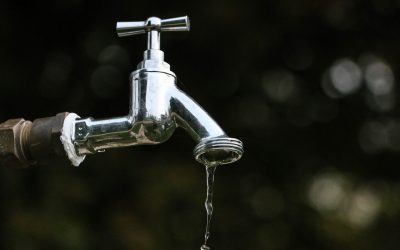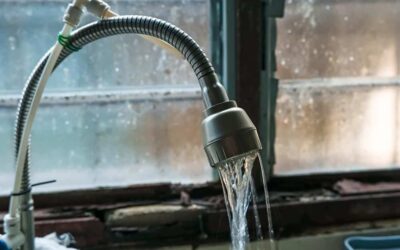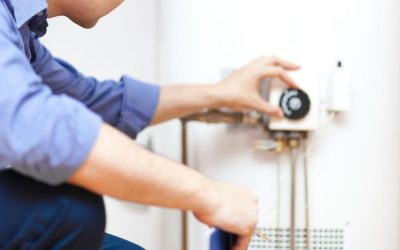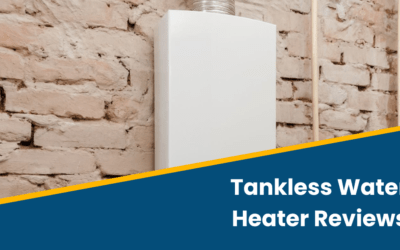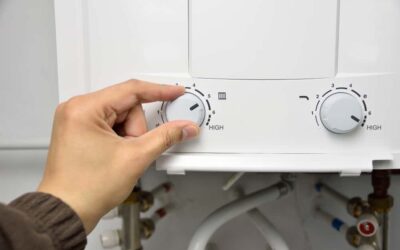Water pressure problems in the home can appear in several ways, all of which can be very annoying to experience.
A faucet might take a long time to fill a sink or bathtub, or a showerhead might not give you the powerful spray you want.
Low pressure can even make a dishwasher or washing machine cycle will take a lot longer than it should.
Depending on where the low pressure problem is will impact whether your whole home is suffering from low pressure, or if just one fixture.
If it is just one fixture that is causing you an issue, then this is normally an easy fix. But if it’s your whole home, then there could be an issue with your pipes.
Here are some of the many causes of low water pressure, and what you can do to solve the issue.
1. Blockages
If you’re only experiencing low water pressure in a few areas of your home, like low water pressure in one faucet of your bathroom for instance, then the problem may not be the water pressure at all. You might actually be dealing with limescale build-up.
Limescale is commonly found in hard water. Where you live will determine what type of water is plumbed into your home. Your water provider can tell you what type of water you have or you can test it yourself.
Although hard water isn’t always a bad thing, it does have some disadvantages. Any product or appliance that uses hard water regularly might accumulate scale.
To prevent this, a scale inhibitor can be fitted to the pipes to remove the limescale as the water enters your property.
This isn’t the only cause of blockages though. If someone has flushed something down a drain that was too big, it can block your pipes.
If this happens, you will most likely notice low water pressure in all areas of your home. If you think a blocked pipe is to blame, then you will need to act quickly to solve this problem, as a blocked pipe may end up bursting so immediately call a plumber for a drain cleaning service.
Another cause of blocked pipes is rust build-up, which is very common in older plumbing systems.
Older plumbing systems usually have untreated pipes, and the water damage is what causes the rust to build as the pipes corrode.
The only way to completely solve this issue is to replace your plumbing system, which can cost both time and money.
A short-term solution is to add a magnetic filter to areas where you notice rust, like the valves on a radiator for example. This will not fix the larger problem though.
2. Issues with main shut off valve
This valve is usually located near the foundation wall, where the main city supply pipe enters the house. The main shutdown valve is sometimes located outside the home.
Once you find it, check to see if this valve is fully open. Make that the handle on a gate valve, which looks like a wheel, is fully turned counterclockwise.
If it is a ball valve, the handle must be parallel to the pipe direction to fully open.
If you have recently had work done on your pipes, then after they have been fixed, this main shutoff valve may have been accidentally left partially closed.
3. Leaks or other damage
Examine your entire home for any leaks or plumbing issues. Move heavy furniture or containers that could conceal water damage, as a pipe leak can happen at any time and in any spot in your home.
A leak affects water pressure as there is less water in the area around the leak, making the pressure drop drastically.
Pipes are one of the things you can’t repair properly on your own. The first thing you will want to do is turn off the water supply.
To do this, close the main home shutoff valves. Then you can either call a leak repair plumber to your home or contact your water company if the problem is caused by a damaged water main.
4. Broken Pressure Regulator
Another common reason for low water pressure in the home is a faulty pressure regulator or pressure-reducing valve.
A pressure regulator is a plumbing control valve that reduces the input pressure to a safe level that won’t destroy your pipes.
In homes with a pressure regulator, a malfunction might result in a significant increase in water pressure. It can also have the reverse effect, causing an abrupt drop in water pressure.
When the pressure regulator fails, all of the home’s fixtures will be affected. You will know if this is the cause because it will happen quickly.
Although you can sometimes replace a pressure regulator yourself with one of the same brand and size, it is typically recommended to leave it to a professional.
The water supply to the house must be turned off at the water meter shutoff valve, and it must be replaced.
If you want to test your water pressure, then attach a water pressure gauge to the exterior hose spigot closest to the water main or pressure regulator to receive an accurate reading.
Depending on where you live, the water pressure should be around 75 pounds per square inch. If your pressure readings are very low, you may have a faulty pressure regulator.
5. Issues with the water meter valve
This is probably the least likely cause of low water pressure, but if you have tried everything else then this may be the answer.
Because this valve officially belongs to the water company and is exclusively utilized by water company staff, you won’t generally ever use it.
However, if your water pressure is low throughout your home, it’s possible that the valve isn’t fully open, especially if your plumbing system has recently been repaired.
If you have had a repair and are now seeing a decrease in water pressure throughout your property, check the meter valve.
It could be on the outer wall of the home (in hot climates), in an underground box between the house and the street, or in an internal utility room such as a basement or adjacent garage.
You will know that the valve is open when the handle is parallel with the water pipe.
Takeaway
While there can be many causes of low water pressure in your home, it is usually very easy to find what is causing the problem.
If you are unsure how to fix the issue, then it is best to hire a local plumber to get the job done.
Bonus Read: How To Repair Kitchen Faucet Low Pressure


